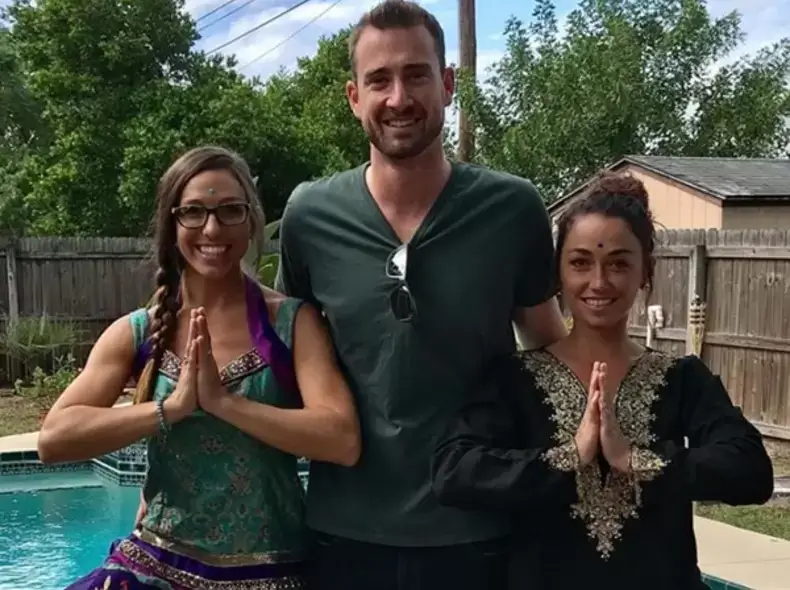Being a primary in a polyamorous relationship brings its own set of joys, challenges, and responsibilities.
As a primary partner, you hold a central role in the intricate web of multiple connections, navigating the delicate balance of love, trust, and commitment.
In this post, I will explore the world of polyamory from the perspective of being a primary partner.
In particular, I will delve into the unique roles and challenges that come with this role, as well as how to integrate successfully as a primary partner.
Whether you are new to polyamory or have been practicing it for some time, I’m hopeful that this post will provide insights, practical advice, and guidance to help you thrive and foster a healthy, fulfilling relationship.
Let’s dive right in…
What does it mean to be a “primary” in a polyamorous relationship?
Primary partners share a deeper level of emotional commitment and intimacy as well as other practical responsibilities like raising children and managing finances.
Being a primary in polyamory, therefore, means that you are at the top of the relationship.
You are the pillar of the relationship, meaning that you are more invested in terms of time and energy to make the relationship work.
It means that your partners look up to you to communicate and set directions that are aimed to make the relationship a success.
A closely related polyamorous lingo is “secondary”, which denotes partner(s) who exist outside the relationship with a primary partner.
Also Read: Paramour vs. Metamour: What’s the Difference?
Responsibilities and Expectations of Being a Primary in a Polyamorous Relationship

Like any other relationship, being a primary in a polyamorous relationship comes with certain responsibilities and expectations:
I. Creating a safe and inclusive space for all partners involved.
Any form of relationship thrives when each partner is well involved in everything that concerns the relationship.
From communication to your relationship’s boundaries, partner inclusion is the key to building a successful polyamory.
As a primary, it is your responsibility to create an environment where each partner feels heard, respected, and valued.
You must strive to have open and non-judgmental communication and ensure that everyone’s perspectives are honored.
This lays a strong foundation to have the best experience with your partners.
II. Bringing Stability and Support to the Relationship Dynamics
With multiple connections and shifting emotions involved, it’s important to provide a stable ground for nurturing your relationship.
You must offer emotional support and help create a sense of balance within the relationship.
Invest time to talk to your partners, listen to what they say, and implement their desires into the relationship.
III. Building and Maintaining Trust
Trust is the foundation of any healthy relationship, and it holds even greater significance in a polyamorous dynamic.
As a primary partner, it is crucial to build and maintain trust with all partners involved.
This involves being honest, transparent, and reliable in all interactions, honoring agreements and boundaries, and actively working towards creating a safe and secure environment for everyone.
Common Challenges Faced By Primaries in Polyamorous Relationships and How They Can Be Addressed

Along with striving to satisfy your relationship responsibilities and goals, there are challenges that will come your way.
Here are some of the most common challenges you will likely face and how to beat them:
I. Jealousy
Even the most emotionally grounded and secure people are likely to run up against insecurity and jealousy when navigating polyamorous relationships.
In most cases, jealousy arises when one partner perceives a threat to their relationship, connection, and sense of importance.
It also stems when you or a partner feels left out, their needs aren’t met, or they are being compared unfavorably to others.
To solve this challenge, revisit the terms of the existing poly agreement, and agree on a mutually beneficial way forward.
Since the feeling of jealousy is psychological, it can only be solved through self-awareness.
You acknowledge the inner conflict, address it, and find ways to resolve it.
II. Poor time management
For a relationship to thrive, partners must spend quality, meaningful, intentional, and dedicated time to nurture their connection.
Unfortunately, one of the main difficulties you encounter in a poly relationship is broken promises and inconsistencies when it comes to allocating time for each other.
Mostly, the agreements around time are often vague, leading to misunderstandings and frustrations.
To manage and have time for your partners, make pre-plans for the time you all spend together.
Be fair in terms of time, whether it’s going out, spending the evenings together, or making dinner and sleeping on the couch.
Sometimes it becomes difficult to have enough time, for example, when partners have to contradict shifts, especially if they are from the working class.
This leaves a little time for partners to catch up and have a nice time.
When you experience this, it is time to recalibrate expectations and meaningfully utilize the available time to nurture the relationship.
III. Poor communication regarding the agreement between the parties
A lack of clarity of what is included in and excluded from the relationship dynamic is often the start of problems for polyamories.
These misunderstandings of the expectations often lead to frustrations, anger, resentment, withdrawal of intimacy, and hatred.
In order to address this problem, respecting your agreements and boundaries is key.
Aim for the collaborative pleasure and well-being of all parties involved.
When something happens where one party feels bad because they didn’t agree previously to it, find a way forward which will prevent the problem from coming up again.
IV. Stigma
Polyamorous relationships are still stigmatized in many societies, and all parties involved (including primary partners) may face judgment, misconceptions, and discrimination from others.
For instance, most people who come out as polyamories face stigmatization from folks who practice monogamy (which is the widely accepted ideology).
The stigma is rooted in confusion and judgment. Because polyamory lies under the radar of relationship practices, the larger part of society doesn’t know enough about it.
It’s a norm that what’s viewed as different is often misunderstood and criticized.
To overcome stigmatization, first, do not get upset or embarrassed by your choice.
Understand that people are allowed to have their opinions.
When you explore further, there is a supportive community ready to back you and your partners.
Join online forums and social groups to gain advice and strategies to face stigma from individuals who have had similar experiences.
Are you the confident type of person who is bold in the moves you make?
Advocating for polyamory can be a wonderful journey to help challenge the misconceptions associated with your relationship choice.
This helps build supportive societies that accept and appreciate others who decide to explore poly relationships.
Tips for Integrating Into a Polyamorous Relationship as a Primary Partner

Just like any other consensual relationship, polyamorous relationships work best when there are boundaries and rules that work for each partner.
It all starts by discussing everything openly and honestly among the partners.
A. Communication and managing boundaries
As a primary in a poly relationship, you are the key to maintaining a healthy relationship.
To achieve this, you have to be an effective communicator and leave a good impact on your partners.
Here are vital points to communicating effectively with your partners.
I. Openness and honesty in communication
It’s important to express yourself honestly while being receptive to your partner’s thoughts and feelings.
Do this through active listening and understanding partners’ perspectives.
II. Using a non-confrontational approach
Taking responsibility for your own feelings is fundamental in communicating with partners.
To express your thoughts and concerns, avoid sounding accusatory. To be heard and understood, explore the magic of using “I” statements.
For example, it’s better to say, “I feel insecure when…” instead of “You make me feel insecure when…”.
This approach allows your partners to open up and talk about deeper issues that they might have.
III. Schedule regular check-ins with your partners
Relationship check-ins are a game changer for polyamory.
They give you and your partners a chance to open up and discuss issues and tactfully address what everyone feels needs to be improved.
Check-ins also help your relationship move from the uncomfortable conversation zone.
It alleviates anxiety for the partners when it comes to initiating discussions, as they no longer have to wonder whether their issues will be addressed or not. This, in turn, fosters a more intentional and meaningful connection.
IV. Active problem-solving.
In poly relationships, issues often arise, and it’s important to focus on finding solutions together without assigning blame.
Collaborate to identify possible adjustments that address the concerns of each partner and adjust accordingly.
V. Clearly communicate your boundaries and expectations, and encourage your partners to do so.
Establish a shared understanding of what is acceptable to ensure that everyone’s needs are taken into consideration.
Employ a regular revisit of the boundaries to address any issues that may arise.
VI. Seek professional help if needed
Navigating the emotional challenges of polyamory sometimes requires professional guidance.
It is important to find a polyamorous counselor or therapist who can provide valuable insights and effective tools to help maintain a healthy and fulfilling relationship.
B. Handling feelings of jealousy and insecurity
Here are strategies for addressing jealousy and insecurity as a primary in a polyamorous relationship.
I. Examine your own feelings of jealousy and insecurity
Make an effort to understand the root cause of these emotions. Is it a concern of families, fear of abandonment, or need for validation?
Self-reflection will help you to know your own triggers and allow you to communicate more effectively with your partners.
II. Practice compersion
Compersion means that you feel happy towards your partners when you witness them experiencing love or happiness with someone else.
Since it was your choice to embark on this path, accept the chance for partners to have a good time with their other partners.
III. Build self-confidence
Strengthening self-confidence and building self-worth will help reduce the chances of feeling insecure.
Engage in activities that boost your self-esteem, practice self-care, and remind yourself of your worth.
A strong sense of self is a strong foundation of polyamorous relationships.
SIV. Seek support
Support groups, friends, and online communities who are supportive and knowledgeable about polyamory are great resources to help you navigate jealousy and insecurity. Reach out and engage with them for validation, advice, and emotional support.
Extra Tip
To succeed in polyamory, date people who choose polyamory themselves, just as you have chosen it for yourself.
Practicing it when your partners know it’s the right thing is so fulfilling.
You save yourself from people whose insecurities dictate their relationships.
As with many things in life, sometimes relationships run their course, and partners’ paths might become no longer compatible.
It might be hard to accept that it doesn’t work anymore, but your best choice is to walk away when it’s over.
Speaking of walking away, an important factor to consider when to put an end to a relationship is by paying heed to your own well-being.
Trust your instincts, and if the relationship no longer nourishes your soul or it weighs you down, it is time to allow things to go off the rail.
Final Thoughts
Everybody expresses love in different ways.
Polyamory is a lifestyle choice that rejects the idea that humans are made to have one partner in their life.
This is a great way to explore love, trust, and commitment as long as partners agree.
It’s important to note that open communication and consent are the heart of this relationship.



